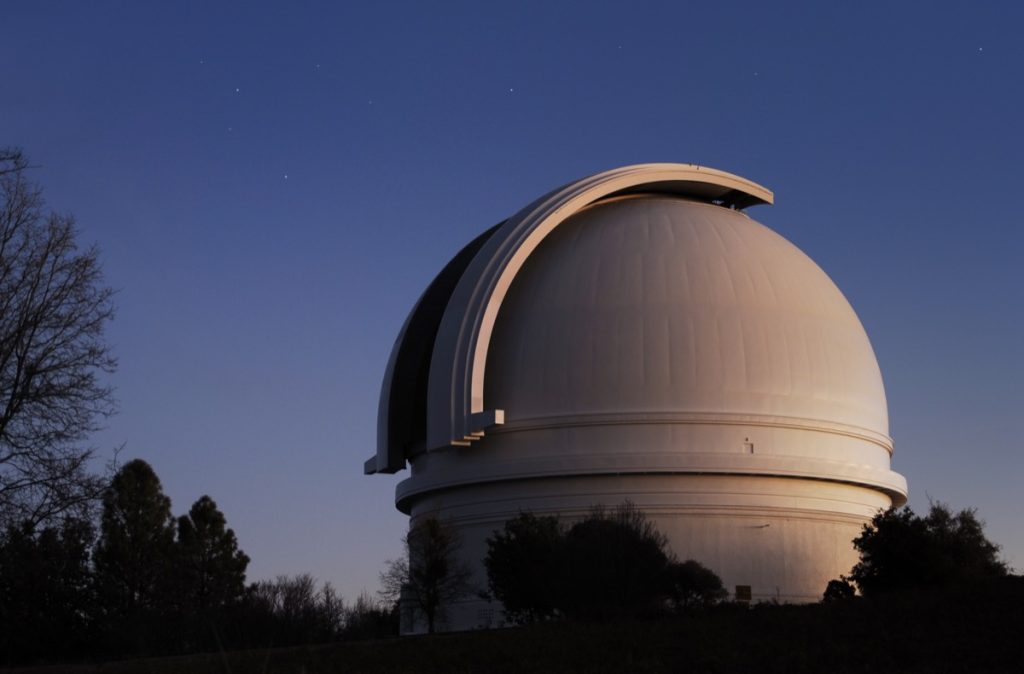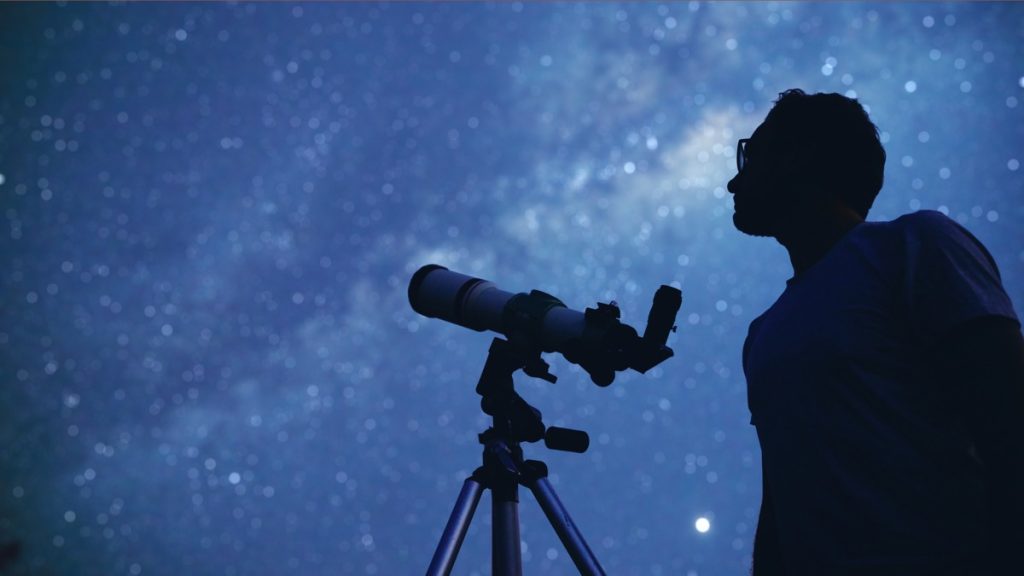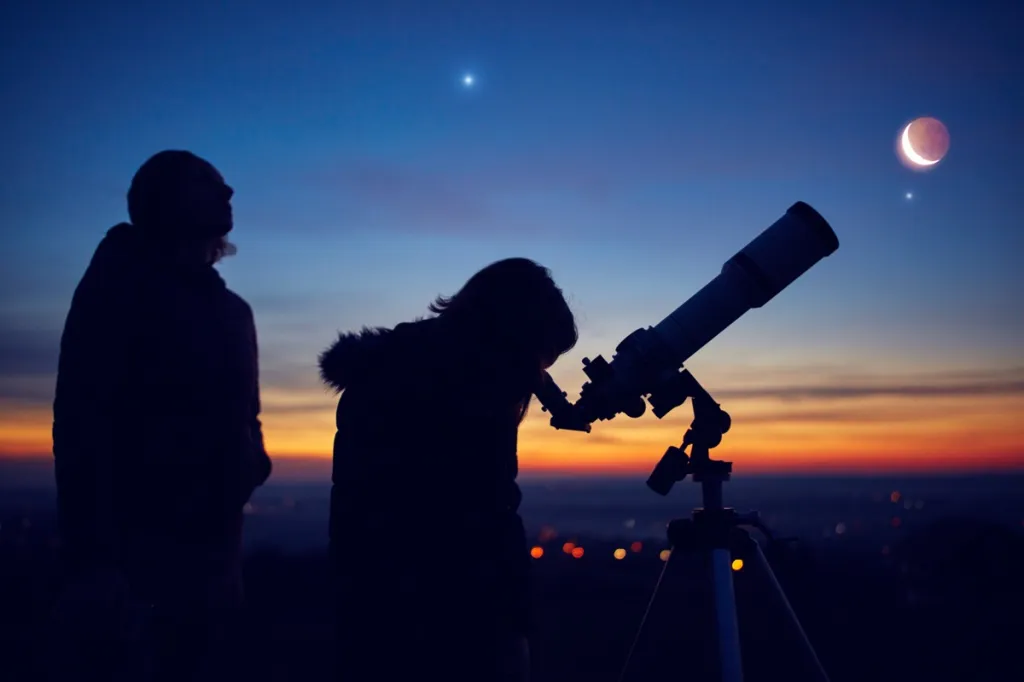Rare Green Comet Appears Tonight for the First Time in 50,000 Years—How to See It

Gazing up at the night sky can be an awe-inspiring experience on any given night. But every so often, we’re treated to a special show by nature that is so uncommon and spectacular that getting a glimpse of it is a must-see event. And while a solar or lunar eclipse may be the kind of thing you only get to see a few times in a decade, there’s now a rare green comet that will appear tonight for the first time in 50,000 years that might be worth looking out for. Read on to learn about how you can see this once-in-a-lifetime event.
READ THIS NEXT: NASA Promises Humans Living on the Moon in 10 Years.
Scientists only recently discovered the celestial object known as Comet C/2022 E3 (ZTF).

Whether you’re an amateur astronomer or just someone who appreciates a good show put on by nature, you’re likely in for a treat in the coming weeks. Last March, scientists first discovered Comet C/2022 E3 (ZTF) after it passed inside Jupiter’s orbit, according to NASA’s “What’s Up” blog. Now, the space agency says the green-hued celestial traveler will reach perihelion—or its closest point to the sun—on Jan. 12 before reaching its nearest point with earth on Feb. 1.
The comet’s fly-by also isn’t an everyday occurrence. The last time the object made its path this close to earth was 50,000 years ago during the Upper Paleolithic or Old Stone Age, according to Space.com. That means the last group of stargazers to catch a glimpse of this spectacle were early Homo sapiens and Neanderthals.
You may not even need a telescope or binoculars to catch a glimpse of it.

Even if your curiosity about the cosmos hasn’t led you to the point of buying a telescope, you may still be in luck. Part of what makes C/2022 E3 (ZTF) passing by so special is that you might be able to see it just by looking up.
“Comets are notoriously unpredictable, but if this one continues its current trend in brightness, it’ll be easy to spot with binoculars, and it’s just possible it could become visible to the unaided eye under dark skies,” NASA writes.
And even though the comet will begin to brighten this evening, it’s far from your only chance to catch a glimpse. According to Space.com, it’s predicted to become brighter over the course of its approach closer to earth and “should become faintly visible with the unaided eye by the third week of January.”
RELATED: For more up-to-date information, sign up for our daily newsletter.
You’ll still need the right conditions to see the comet—which is currently sprouting two tails.

Of course, the possibility of seeing the once-in-a-lifetime pass by will also come down to the kinds of viewing conditions you have. Light pollution—the only greater foe to astronomers than a cloudy night—will make it much harder to spot the comet. But as the brightness from the recent full moon continues to decrease in the coming days, views should improve for anyone peering up into a dark sky away from city lights, according to Space.com.
But even if you manage to spot C/2022 E3, don’t expect it to have the same brilliant hues that you see in photographs. That’s because the stunning colors are usually part of the comet’s gas cloud, which is less visible to the human eye than its dust cloud. Instead of a sweeping skyscape, it will appear more as a “circular cloud” that gets much brighter and more condensed at its center, trailed by a faint-yet-visible dust trail, Space.com predicts. It also may not live up to the standards set by other recent “naked-eye” comets.
“This comet isn’t expected to be quite the spectacle that Comet NEOWISE was back in 2020. But it’s still an awesome opportunity to make a personal connection with an icy visitor from the distant outer solar system,” NASA writes.
Here’s how you can spot Comet C/2022 E3 for yourself.

If you’re one of the many who hope to catch a glimpse of this outrageously rare celestial event, it’ll be essential to make sure you’re looking at the right part of the sky. Anyone viewing from the Northern Hemisphere should look just above the horizon in the northeast when the comet reaches perihelion around 11:18 p.m. EST, per In the Sky. It will then begin to move northwest across the sky for the rest of the month. Unfortunately, viewers in the Southern Hemisphere will have to wait until early February to catch a glimpse.
You might also be able to use other objects in the night sky to help you locate the comet, as it’s expected to pass our neighboring planet on Feb. 10. “Mars is very bright, and you can just look within one degree around Mars and maybe be able to see it,” Thomas Prince, astronomer and director of the W.M. Keck Institute for Space Studies at Caltech, told FOX Weather.